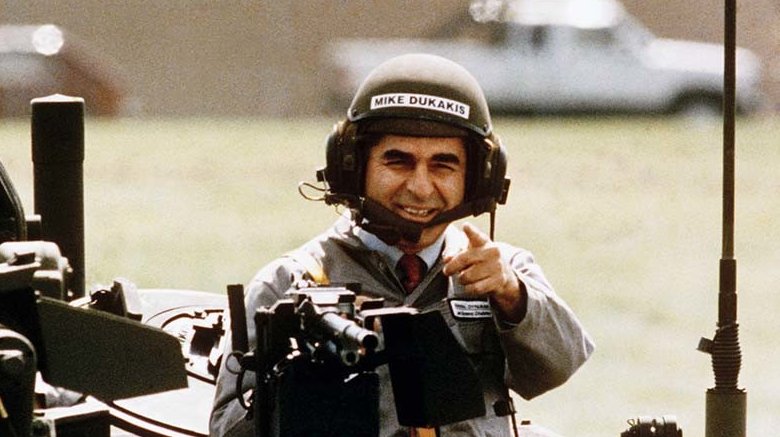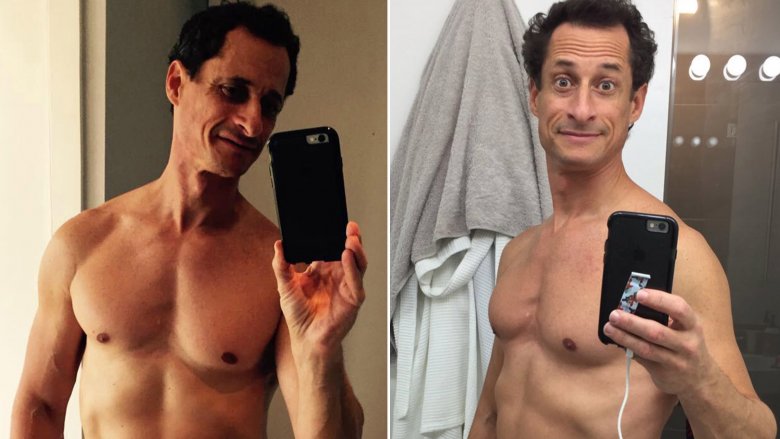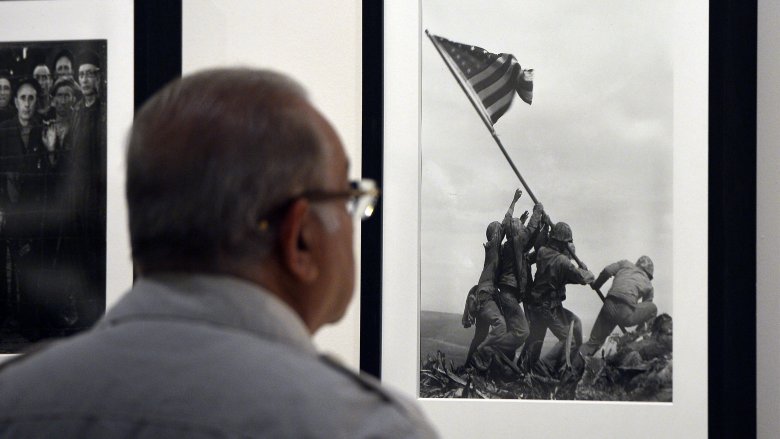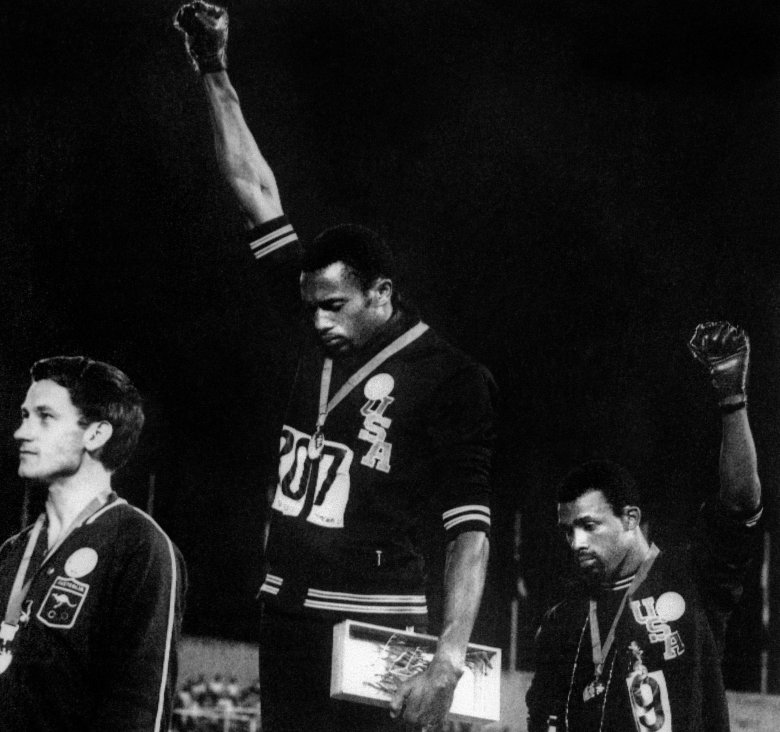Famous People's Careers Destroyed By A Single Photo
Every picture tells a story. In some cases, though, the story in question is how the subject got their butt fired for appearing in a compromising picture. We're all familiar with how being in the wrong place at the wrong time can lead to endless internet mockery and unfortunate meme stardom (or fortunate, if you happen to be the owner of Grumpy Cat and you go from waitress to millionaire). We might be less familiar with how this phenomenon can affect genuinely important or famous people as badly as the common schlub on the street.
Oh yeah. Importance, recognition, or even engaging in literal heroics is no barrier to having your career brought crashing down around your ears just because of some dumb photo. Sometimes, this career destruction is probably deserved. Other times, it's just the cherry of disappointment atop the gigantic cake of unfairness that we like to call "life in the internet age."
Anthony Weiner's wiener winds up ruining his career
Here's a pro tip. If you're gonna send images of the contents of your pants across the internet, you should know the difference between a private message and a digital megaphone. Former New York Congressman Anthony Weiner mixed the two up in 2010 when he tried to send a PM of himself with a bulging, boxer-clad groin to a young woman over Twitter. Unfortunately, he posted it to his timeline, propelling his crotch to internet stardom (via CNN).
In the seconds before he hit that send button, Weiner was riding high on his rising political career. The year before, he'd made a barnstorming speech about taking care of 9/11 first responders, and the press had tipped him as a possible future prez. The ambitious congressman was probably hoping that soon everyone in America would know his name. He just didn't realize it'd be for an ill-advised selfie of his genitalia (above, deliberately cropped to keep your breakfast from exiting via the nearest orifice).
Weiner realized his mistake and deleted his tweet, but by then it was obviously too late. Conservative blogger Andrew Breitbart already had a screenshot, and he made sure to let the whole world know about it. The story gathered steam. TMZ managed to dig up other semi-nude photos Weiner had sent, and the wang-flashing wonder was forced to resign from Congress. It started a downward spiral that would eventually see him convicted of sexting a teenager (via CNN).
Ed Miliband loses an election by failing to eat bacon properly
The adorkable leader of Britain's opposition Labour party from 2010-15, Ed Miliband was the unlikely challenger to Prime Minister David Cameron. Despite his nerdy looks, wonkishness, and a TV manner best described as "malfunctioning android," Miliband entered the 2015 election with polls showing he would win (via The Guardian). Instead, Labour lost by 7 points, a miss that seemed really spectacular in the pre-Brexit, pre-Trump days. One reason for this Mili-debacle? A photo of the Labour leader eating a bacon sandwich.
The year before the election, Miliband stopped in London's Covent Garden for a snack. Almost like a real-life Bad Luck Brian, he happened to tuck into a bacon sandwich just as a photographer snapped a picture. The resulting photo was so ungainly, so grotesque, and so hilarious that it ruined Miliband's chances. It haunted the poor guy through the next year of his life. On the eve of the general election, tabloid The Sun put it on their front page. Any policies Miliband had were lost beneath a stream of bacon gags.
The Telegraph has suggested the photograph cost Miliband the election. In the U.K., it's seen as a defining moment not just in the destruction of Miliband's career, but in politics in general. During the 2017 election, The Guardian suggested an image of Theresa May awkwardly eating fries could be "2017's bacon sandwich." Funnily enough, May also took a drubbing at the polls. What is it with British voters and culinary etiquette?
Ira Hayes' moment of heroism turns him into an alcoholic
You know Ira Hayes. No, seriously, you do. He's in the iconic image of soldiers raising the flag at Iwo Jima, at the left with his hands in the air, just letting go of the flagpole as it swings up into the blue Pacific skies. In the moment that photo was taken, Hayes became one of the most famous figures in American history, up there with Rosie the Riveter and Uncle Sam. Because of that moment, his entire life and career were utterly destroyed, as a history site dedicated to Iwo Jima details.
For everyone who saw that image, the flag raisers were heroes. As the only Native American in the group, Hayes was doubly feted. FDR had them all immediately pulled out of active duty and dragged back to the States to help the government raise bond money. For men who'd just been literally fighting for their lives, this should've been a dream. Not for Hayes. Being pulled out of the Pacific theater gave him crippling survivor's guilt. He wanted nothing more than to be back there, fighting alongside his "good buddies." But his newfound fame meant he was more useful as a symbol than a soldier.
Hayes' survivor's guilt got so bad that he quit the army, returned to his reservation, and sank into crippling alcoholism. Less than a decade after the flag went up over Iwo Jima, Hayes drank himself to death. He was 32.
Peter Norman was barred from the Olympics for not being racist
At his peak, Peter Norman was the athlete who outran an entire continent. His 200 meter record, set in 1968, remains unbroken in his native Australia. He was an Olympic silver medalist. But you probably know him as the white guy in the black power Olympic photo. As Time recounts, Tommy Smith and John Carlos' 1968 protest led to both men getting barred from the U.S. team. What most people don't know is that Norman suffered, too. Even though he didn't raise his fist, he still chose to wear a civil rights pin on the podium. Australia crucified him for it.
Despite Norman being the best sprinter in Australian history, Melbourne decided his failure to condemn two men standing up for civil rights was more important than a bunch of medals. The establishment blackballed him. When the Munich Olympics rolled around, Australia refused to send Norman, even though he was fifth in the entire world and had qualified 13 times. How little did the country want to do with him? Australia didn't field a single sprinter that year.
According to the BBC, the photo didn't just destroy Norman's athletic career, it destroyed his life. He sank into addiction. When Sydney hosted the Olympics in 2000, he was the only former medalist in Australia not be invited as a VIP. Not that his stand was completely forgotten. When he died in 2006, Smith and Carlos traveled to Australia to act as pallbearers at his funeral.
Dick Middleton's dog turns him into an international hate figure
Imagine becoming an international hate figure for trying to do a good deed. Not a good deed that goes wrong, like using a time machine to kill Hitler and discovering the present is now a radioactive wasteland ruled by cockroaches, but a basic, decent thing. That's what happened to Dick Middleton, the cop in the famous civil rights era picture above. The image of white Southerner Middleton letting his dog savage a young black kid was so powerful it was turned into a famous statue in Birmingham. But in real life, Middleton wasn't attacking the kid. He was trying to stop him becoming dog food.
Malcolm Gladwell covered Middleton's story in his podcast Revisionist History (via Medium). The picture he pieced together is one of bad timing and a whole lot of assumptions on the part of people who saw the photo. Walter Gadsden, the activist, remembered that he accidentally bumped into Middleton. As Gladwell reveals, Middleton's dog reacted by lunging for Gadsden. Middleton tried to simultaneously push the kid away and hold the dog back. The picture just happened to look like the opposite was happening. But in the civil rights era, it was close enough to the truth that people believed it.
For Middleton, that meant a lifetime of hate mail and death threats. While he didn't actually lose his job as a cop, his wife told Gladwell he suffered hugely for his presence in Birmingham that day. The camera never lies, huh?
Al Franken's grope photo dynamites his Senate career
The end of 2017 saw a Weinstein-shaped tidal wave of sexual misconduct allegations sweep from Hollywood and across Washington, washing away any number of congressional careers. The most memorable of all may have been the spectacular sinking of Al Franken. The former comedian had spent October lamenting how women's allegations about powerful men were often ignored (via Washington Post). Less than a month later, broadcaster Leeann Tweeden made allegations about the senator on KABC. When she Tweeted a link to her accusations, she included an old photo of Franken groping her breasts while she slept.
The allegations alone could have been enough to sink Franken, but the photo made sure he went down. Taken on a USO tour in 2006, it showed the future Senator grinning as he grabbed the sleeping Tweeden. It was so plain, so utterly damning, that all Franken's attempts to brush it off or claim it as a joke came crashing down like a Hindenburg filled with flammable entitlement. Seven more women eventually went to the press with their own accusations against the Democratic Senator (via Vox). Franken soon resigned, his career on Capitol Hill at an end.
General Loan ruins his past, present and future careers
It's not often you get famous for shooting an unarmed guy in the head, unless your name is Lee Harvey Oswald. (Fun fact: John Wilkes Booth was already famous.) But General Loan managed it. In the carnage of the Tet Offensive, he and his South Vietnamese company captured a Viet Cong who'd murdered the wife and children of one of Loan's friends. So Loan did what any character in a Liam Neeson movie would do. He shot the captured man in the head, just as journalist Eddie Adams took his iconic photo. But life ain't a popcorn vigilante flick. Loan's global audience turned him into a hate figure.
Despite being instrumental in saving Saigon during the Tet Offensive, General Loan became infamous as a cold, callous murderer. As the BBC explains, his military career was tarnished and worse was still to come. When Saigon finally fell, Loan sought refuge in the U.S. The board recognized him from the photo and threatened to deport him.
It took a public intervention by Adams to get Loan's deportation order lifted. But the photo wasn't done ruining the general's careers. After Loan made it to Washington, D.C., and opened a restaurant, the photo resurfaced and forced him to close down his business. Many years later, Adams would write: "Two people died in that photograph. The general killed the Viet Cong; I killed the general with my camera."
Kathy Griffin kills the president and her career with one blow
Cutting off someone's head is kind of a big step. Even when that person is disliked by some people, and even when you're only decapitating them in effigy. Self-professed D-list comic Kathy Griffin found that out the hard way in May 2017, when she posed for a photo wielding a fake severed head of Donald Trump. As the Hollywood Reporter details, the blowback was so severe that it sent Griffin into celebrity exile.
Griffin had wanted to shock with the photo. She hadn't realized just quite how shocking it would be. The image became international news and caused the mother of all firestorms to come crashing down on the comic, even after she released a tearful apology on YouTube. Of course, she then retracted that apology at a press conference, blamed the president for "breaking" her, and incoherently tried to paint the violent image as a free speech issue. There's trying to dig yourself out of a hole, and then there's trying to tunnel all the way to Australia.
Ironically, the photo wound up doing to Griffin's career what she'd done to the Trump effigy. Theaters on her tour canceled her gigs. CNN fired her from the New Year's Eve show she'd spent a decade presenting. (To add insult to injury, the first post-Griffin show pulled in record viewers.) She went from primetime to offers to do gigs at a "pop-up comedy club in Beirut, Lebanon." Ouch.
Miss Iraq's selfie for peace forces her family to flee
Beauty pageant contestants get plenty of heat for addressing political topics with dumb platitudes. Maybe they give these answers because they're aware how odd the attempt to mix geopolitical insight with swimsuit competitions is. Or maybe it's because they're aware of the potential for total disaster if they do get involved in politics. In 2017, Miss Iraq (real name Sarah Idan) found this out the hard way by posing for a selfie with Miss Israel. She captioned it "peace and love from Miss Iraq and Miss Israel." Can you guess which two human concepts were lacking from the world's response?
As CNN details, the photo created the kind of uproar in the Arab world usually associated with ill-advised American invasions. Idan was accused of ignoring the plight of Palestinians, of siding with Israel, of betraying her country. The Miss Iraq organization threatened to strip her title. Her family received so many death threats they were forced to flee the country. The Iraqi government even stepped in, asking her to take the picture down and apologize to the nation. Idan alleged that her Iraqi national ID renewal was refused, meaning she couldn't get a passport. (Idan is a dual Iraq-U.S. citizen.) Although she technically managed to retain the title of Miss Iraq, her career representing her country was over. No wonder most beauty pageant contestants reply to political questions with non-specific platitudes about world peace.
Mike Dukakis stars in the worst photo op in history
A common thread in these tales is that the subjects either didn't know the photo was being taken, were incidental to the picture, or just didn't expect many people would see it. Mike Dukakis' tank photo breaks all these rules. His aides set up the photo. He was the main focus. They wanted the entire world to see it. Well, be careful what you wish for. The Dukakis tank photo became the most talked-about image of the 1988 presidential campaign, and likely cost Dukakis the presidency (via Politico).
At 5-foot-6, Dukakis wasn't a big guy. As the Democratic nominee, he worried he lacked credibility as a potential commander in chief. So a 23-year-old aide set up a photo op of the candidate riding around in a tank. Rather than make him look like a guy who could sock Ivan Drago in the mouth and then drink the Russian bear under the table, it made him look like a guy suffering a Napoleon complex even Napoleon would find embarrassing. The picture was such a disaster that George Bush's campaign enthusiastically reprinted it at every opportunity.
To give some idea of just what a legendary mistake the photo was, take this Boston Magazine profile of Dukakis from 2017. The word "tank" features three times. The Willie Horton affair — in which a woman was violently assaulted by a felon on release under a Dukakis-sponsored program — is mentioned only once.





